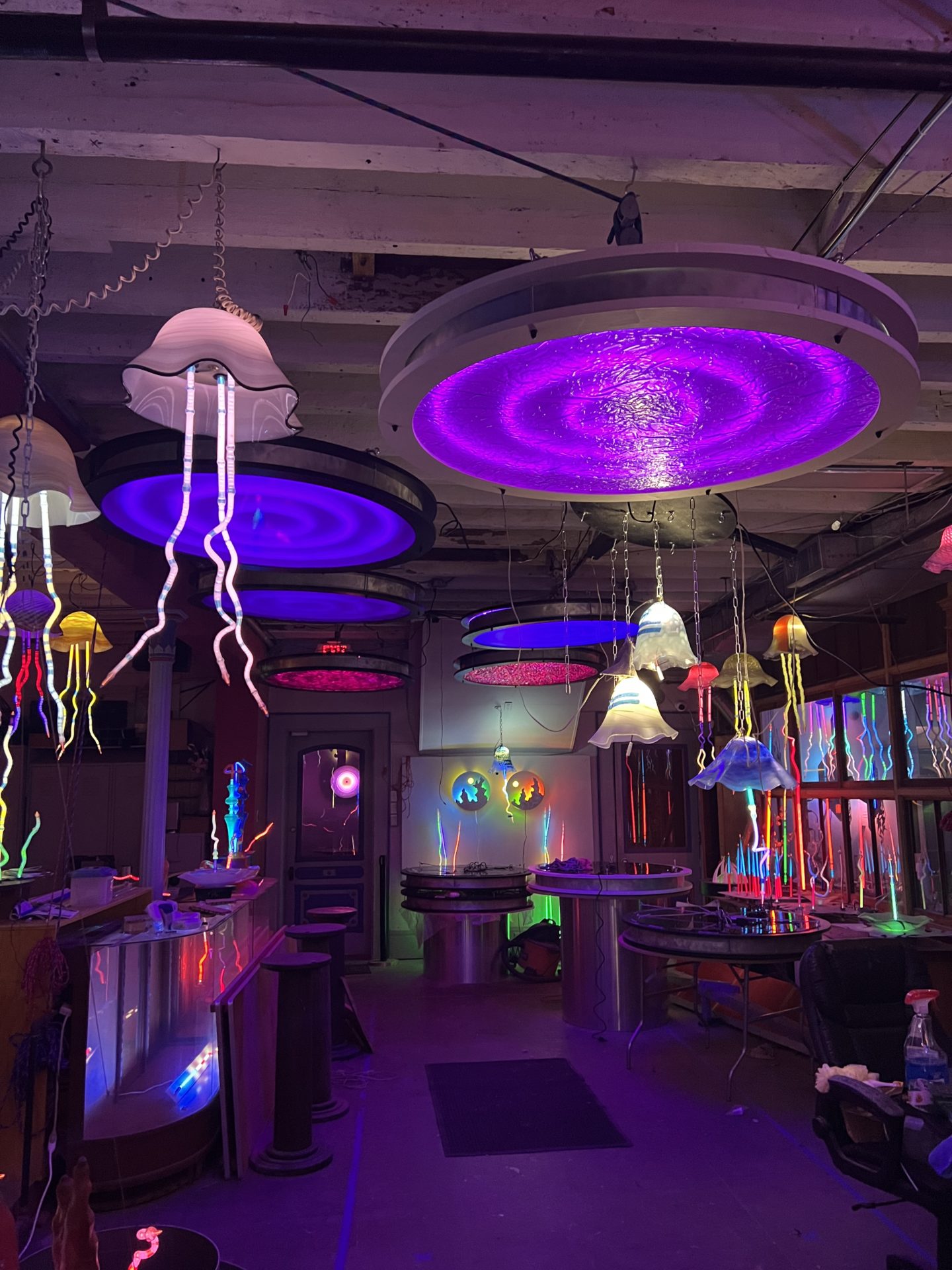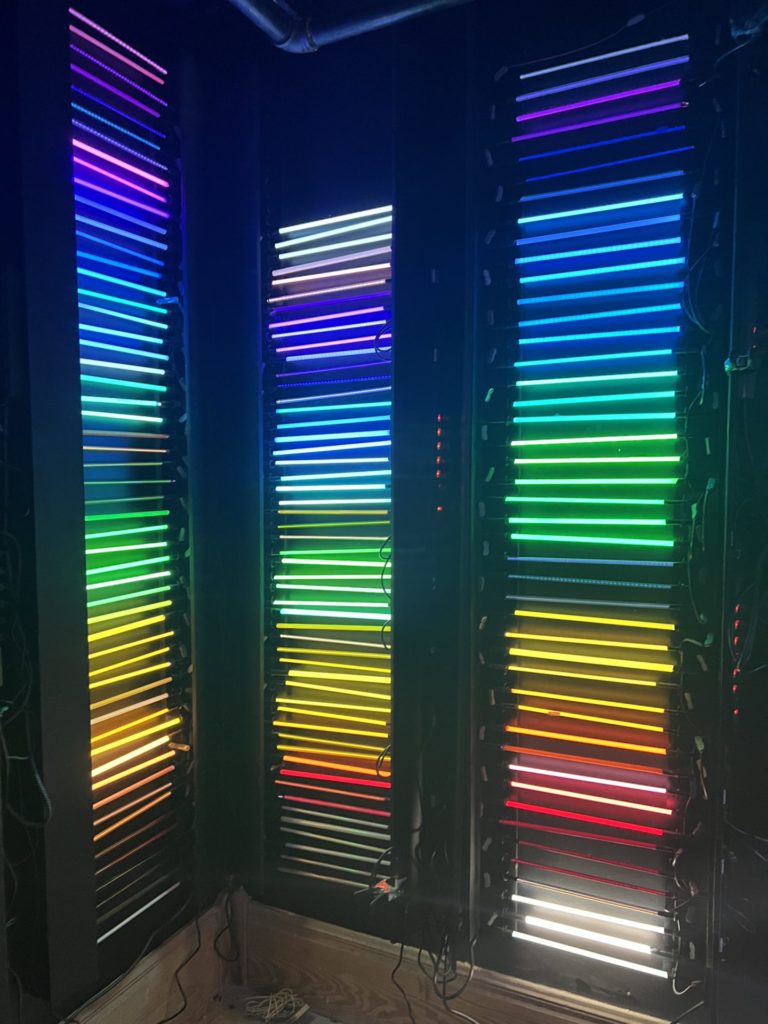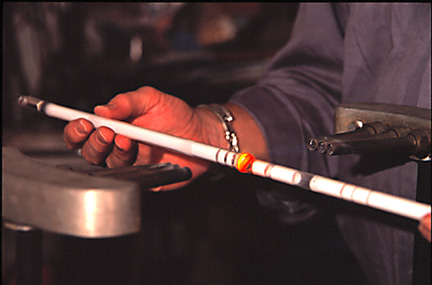
glassLight Sculpture Studio
In production since 1985, glassLight studio has grown from a small back space in s silk artist’s production studio on Frenchman St. in New Orleans to where it now resides at Venusian Gardens since 2001. The focus of work produced at glassLight has always been on neon, mostly combined with blown, slumped and fused glass as well as aluminum and other media. A fully functional neon production studio, neon tubing is blown and processed on site expanding on the traditional formats and techniques associated with the sign industry to open up new and unique expressions of the unique media that is neon.
In addition to the use of commercially powder-coated neon tubing, at glassLight tubes are also hand-powdered using phosphors obtained from Europe to produce blends of soft and subtle hues that can be achieved only through the individual application of the powders into the tubes by hand. Also, in some cases, the neon tubing is individually hand blown from molten glass, allowing for colors not available commercially.
The glassLight Studio Staff
Eric Ehlenberger is the senior artist and owner of glassLight studio and Venusian Gardens, He works in collaboration with other artists including Charity Poskitt, Vanessa Kent. and James Newman. Charity is a very accomplished glass blower responsible for the beautiful blown glass components found in Ehlenberger’s work, With more than 15 years of experience blowing glass, she provides an essential element for the production of the artwork at glassLight studio and VG. Nessa is a talented ceramic artist, also with many years of experience with additional expertise in woodworking. James Newman is a tireless, well almost, and skillled all-around craftsman with expertise in working with metal and wood as well as electrical and construction work. Mark Morris is a newcomer to GlassLight Studio. He is an accomplished, well-respected glass blower with an amazing and imaginative collection of glass works.
The colors of neon
Commercially manufactured tubing provides a fairly wide range of standard colors, although the color options are shrinking along with the neon industry in general due to the use of LEDs. Commercial applications of neon signage use just two inert gases (neon and argon) to achieve their colors. At glassLight all available inert gases including helium, krypton and xenon are also used to expand our color palette. The use of these other gases greatly expands the color options available to the artist. Over the years, a collection of more than 500 uniquely colored neon tubes has been assembled in a massive display of color representing most of the colors of neon historically available.
At glassLight studio the use of hand-applied phosphors allow for truly unique patterns and colors of the tubes incorporated into the artwork.
Bending neon Tubes
The skills required to bend and shape neon tubes are ones that requires a long time to acquire and there are fewer and fewer individuals with the skills and equipment necessary fo produce good neon tubes. Tours of the studio and demonstrations of the bending and processing of neon tubes are available.
Processing neon
Once a neon tube is bent and shaped it requires processing to fill the tube with an inert gas to allow for illumination. The process requires the application of high voltage electric current while pumping out a deep, impurity-free vacuum to produce a tube that with appropriate appearance and a longevity that should be measured in decades.


